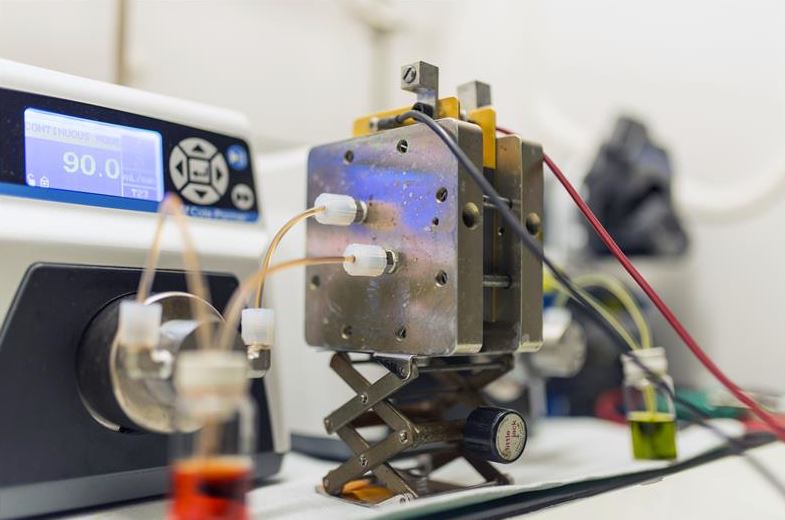The high-capacity flow battery uses organic molecules called quinones, which store energy in plants and animals, and a new class of battery electrolyte material. They contend in their study that it is high-performance, non-flammable, non-toxic, non-corrosive, and its low-cost could enable large-scale, inexpensive electricity storage.
Flow batteries store energy in solutions in external tanks — the bigger the tanks, the more energy they store. In 2014, these Harvard scholars replaced metal ions used as conventional battery electrolyte materials in acidic electrolytes with quinones. In 2015, they developed a quinone that could work in alkaline solutions alongside a common food additive. Now they have taken B2, which helps store energy in the body, as an inspiration. The key difference between B2 and quinones is that nitrogen atoms, instead of oxygen atoms, are involved in picking up and giving off electrons.

Credit: Kaixiang Lin/Harvard
“With only a couple of tweaks to the original B2 molecule, this new group of molecules becomes a good candidate for alkaline flow batteries,” said Professor Michael Aziz of Harvard. “They have high stability and solubility and provide high battery voltage and storage capacity. Because vitamins are remarkably easy to make, this molecule could be manufactured on a large scale at a very low cost.”
Citation: A redox-flow battery with an alloxazine-based organic electrolyte bu; Kaixiang Lin, Rafael Gómez-Bombarelli, Eugene S. Beh, Liuchuan Tong, Qing Chen, Alvaro Valle, Alán Aspuru-Guzik, Michael J. Aziz&Roy G. Gordon, Nature Energy 1, Article number: 16102 (2016); doi:10.1038/nenergy.2016.102




Comments